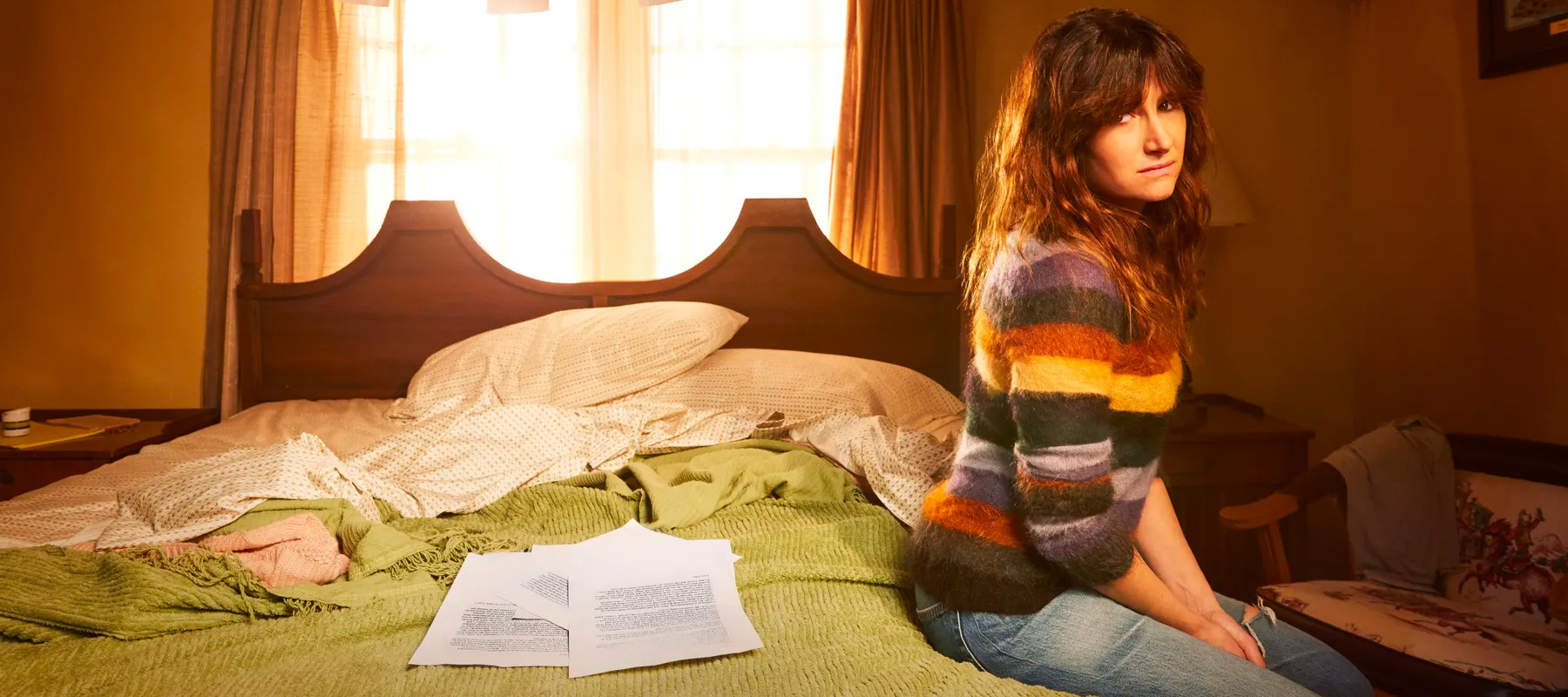Teaching Feminist Theory through Jill Soloway’s I Love Dick
By
Sarah E. S. Sinwell
Published on/by
Accompanying text
Engaging with ideas of hegemonic masculinity, femininity, homosexuality, and heteronormativity, this video essay examines I Love Dick (Soloway 2016-17) as a means of studying the popularisation of feminist theory in contemporary North American media. It is structured around the ways in which Soloway’s work is itself a kind of feminist pedagogical practice. Examining how the use of cinematic techniques such as screenwriting, editing, music, and sound design can function to incorporate feminist and film theory into popular media, the video essay draws attention to the intersections between feminist theory and female and non-binary filmmaking.
In I Love Dick, Jill Soloway explicitly references feminist filmmakers such as Chantal Akerman, Sally Potter, Jane Campion, and Cheryl Donegan, and incorporates video clips of feminist artists and performers such as Carolee Schneemann, Annie Sprinkle, and Kara Walker. In this way, I Love Dick’s self-reflexive style participates in a feminist world-building that insists upon the relevance and significance of female and non-binary artists and filmmakers. In fact, by placing underrepresented female artists and directors at the centre of their storytelling, Soloway insists upon using visual and aural citation as a feminist practice of pedagogy.
Soloway also explicitly references feminist theory in their work. In a Toronto International Film Festival Master Class, Soloway discussed their attempt to combat Laura Mulvey’s canonical idea of the male gaze from her 1975 essay ‘Visual Pleasure and Narrative Cinema,’ saying: ‘You know what’s crazy is that it’s been FORTY YEARS since Mulvey named the Male Gaze and no one has claimed being the namer of the Female Gaze yet! I really want that. I want it to be like MULVEY: MALE GAZE, SOLOWAY: FEMALE GAZE!’. (2016) Continuing in the vein of feminist and film theorists that have responded to Mulvey since the 1970s, Soloway’s self-reflexive use of editing and the soundtrack draws attention to these gazes, enabling a rethinking of the boundaries between gendered and sexualised identities.
Deconstructing what Soloway calls ‘a patriarchal idea of filmmaking’ (Bobrow 2017), I Love Dick simultaneously perpetuates and resists normative ideas of non-normative identities by explicitly referencing both feminism and queer theory. I Love Dick’s privileging of female-centred characters, narratives, artists, and desires positions it as overtly feminist, but is comprised by the show’s (and characters’) obsession with Dick/Kevin Bacon. This display of the contradictions inherent in both upholding and resisting heteronormativity places both the characters and the viewers at the centre of this self-reflexive critique of patriarchal culture and our complicities in it.
The video essay begins with a quote from Chris Kraus’s memoir of the same title: ‘the sheer fact of women talking, being paradoxical, inexplicable, flip, self-destructive but above all else public is the most revolutionary thing in the world’. (2006: 210) Drawing attention to the construction of femininity and female desire and the contradictions and slippages inherent in their representation, the video then cuts to the moment in the pilot episode in which Kathryn Hahn (playing Chris) sees Dick (played by Kevin Bacon). Here, in an overturn of the historic and cinematic portrayal of many sexual/romantic encounters, it is the female gaze that represents desire onscreen through the use of editing, freeze frames, the narration of open letters and the aural sensuality of the soundtrack.
As Soloway writes in their memoir, ‘I Love Dick was different in that it used the form of television for its own purposes. For revolution’. (2018: 203) The revolution of I Love Dick is an uninhibited portrayal of female desire that holds within it an entanglement not just with passion and empowerment, but also hatred, derision, and frustration. From its first moments, I Love Dick places Chris, femininity, and female desire at the centre of its narrative. At the same time, Dick’s acknowledgment of patriarchy and female oppression also serves to open up a space for feminist critique even as he belittles female work. This analysis of I Love Dick is a commentary not only on the contemporary female experience, but also on female filmmaking itself.
Acknowledgements
Special thanks to my Research Assistant Dana Ware for helping with the editing of this video essay.
REFERENCES
Bobrow, Emily (2017), ‘Jill Soloway on Feminism, Hollywood, and Her New Amazon Series I Love Dick’, Newsweek, May 19, 2017.
Kraus, Chris (2006), I Love Dick, South Pasadena, CA: Semiotext.
Mulvey, Laura (1975), ‘Visual Pleasure and Narrative Cinema,’ in Screen, Vol. 16, No. 3, pp. 6-18.
Soloway, Jill (2016), ‘TIFF Master Class: The Female Gaze,’ 11 September 2016, https://www.toppleproductions.com/the-female-gaze (last accessed 5 July 2019).
Soloway, Jill (2018), She Wants It: Desire, Power, and Toppling the Patriarchy, New York: Crown Archetype.
Films & TV Series
Head (1993) dir. Cheryl Donegan.
I Love Dick (2016-2017) created by Jill Soloway & Sarah Gubbins, Amazon Video (1 season).
Jeanne Dielman, 23 Commerce Quay, 1080 Brussels (1975) dir. Chantal Akerman.
Orlando (1992) dir. Sally Potter.
The Piano (1993) dir. Jane Campion.


